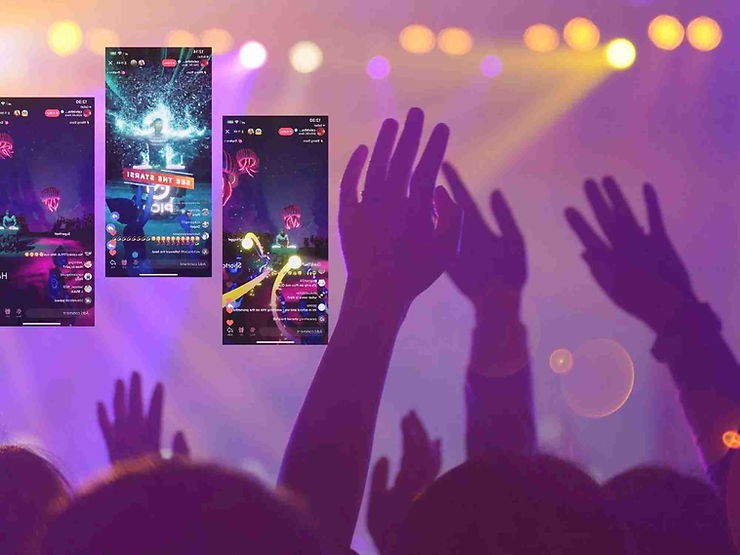The Rise of Indie Electronic Music
Defining Indie Electronic Music
Indie electronic music is a subgenre combining the electrical sounds and production methods of electronic music with the autonomous attitude of indie songs. Its emphasis on innovation and experimentation and DIY (do-it-yourself) attitude define it.
Usually independent, without the help of most major record companies, indie digital musicians produce their music on their own and release it through unbiased file labels or self-launch methods. This allows them to link immediately with their target market and have complete inventive management over their track. Artists like ODESZA and Sylvan Esso have made a livelihood and attained mainstream success, therefore indie digital music has gained respect recently.
The Evolution of Indie Electronic Music
Indie electronic music started to take the front stage in the music business as it developed. Artists started experimenting with and adding electronic elements to their indie rock or pop songs. A broad target audience might find a special and appealing sound produced by this mixing of genres. Synthesizers, drum machines, and other digital tools became especially common, adding another layer to indie songs.
Influences and Inspirations in Indie Electronic Music
Indie electronic music finds influence in many different genres and musicians. Originally combining electronic music and indie rock, this genre has developed and grown over the years. Incorporating aspects from genres including pop, hip-hop, and even classical music, indie electronic scene artists typically play with several sounds and styles.
Indie music’s DIY philosophy motivates musicians to explore their creativity and challenge limits, therefore producing distinctive and original sounds. Works of trailblazers like Kraftwerk, Brian Eno, and Aphex Twin—who helped shape the genre— inspire many independent electronic performers.
Exploring the EDM Scene
Understanding EDM: Electronic Dance Music
Commonly known as EDM, electronic dance music is a form of music that has lately attracted great respect. Its vivid beats, appealing melodies, and contagious rhythms define it. With a devoted network of admirers and performers driven by the genre, EDM has become a global phenomenon.
Fans of EDM actively participate in events, galas, and web platforms dedicated to the song, therefore reflecting the community involvement in the medium. This sense of community distinguishes EDM from other genres and generates a vibrant and distinctive way of living.
The Origins and History of EDM
Rich and enthralling tracks from several years span Electronic Dance Music (EDM). Responding to the rising popularity of disco and the developments in digital song technology, it surfaced in the past due the nineteen seventies and early eighties. Originally experimenting with synthesizers, drum machines, and other digital equipment to produce a brand-new sound that would get people moving on the dance floor, innovative artists and manufacturers began.

EDM first became well-known in the 1990s and then spread around the globe. The rave lifestyle’s upward drive and the introduction of the most recent track production techniques helped to explain its appeal. Raves became the hub of the EDM movement, where people would gather to bounce and lose themselves on the tune.
Early in the 2000s, EDM persisted in adapting and diversifying to produce several subgenres like trance, house, dubstep, and more. Every subgenre appealed to a different set of devoted followers. EDM’s sound was shaped in great part by musicians such as Daft Punk, The Chemical Brothers, and Skrillex, therefore stretching its possibilities.
EDM has become a global phenomenon nowadays thanks to festivals and events bringing big numbers of people all over. It has also become a significant source of pressure in the tuning business as EDM songs rule the charts and shape mainstream pop songs. Full-size, with a wide spectrum of systems, software packages, and tools to enable them build their very own electronic masterpieces, is the shopping guide for aspirant EDM producers and fans.
Subgenres in the EDM Scene
Several subgenres in the very varied EDM scene satisfy various tastes and preferences. There is something for everyone in the EDM scene from highly energetic genres like big room and hardstyle to more melodic and atmospheric genres like progressive house and trance. Every subgenre has special qualities and a following that together paints a lively scene of electronic music. There is a subgenre within the EDM scene that will appeal to you whether your taste is for the strong drops and pounding basslines of dubstep or the uplifting melodies of trance.
The Convergence of Indie and EDM
Indie Artists Embracing Electronic Elements
In the realm of indie music, musicians are always breaking free and experimenting with unique sounds and techniques. Indie musicians adopting electronic components in their songs have become very popular recently. Those musicians may create a special mix of indie and digital tunes by including synthesizers, electronic rhythms, and other digital instruments into their compositions.
This blending of genres creates fresh channels for expression and allows a great spectrum of creative possibilities. Indie songs also heavily rely on Lyric writing, and many of the musicians in this genre find non-public reviews, emotions, and societal issues by means of their songs. Those musicians can produce a catchy and significant song by integrating digital components with careful and reflective lyrics.
EDM Producers Collaborating with Indie Musicians
In the always-changing terrain of music, cooperation has become more important for creative development and creativity. To produce original and boundary-pushing tunes, EDM producers have been looking for alliances with indie musicians more and more. This cooperation not only provides new opportunities for both sides to reach larger audiences but also best fits for the mixing of several musical patterns and effects.
This trend is mostly driven by the need to access the several fan communities of both genres. Recognized for their aggressive beats and contagious melodies, EDM producers may profit from the devoted following of independent bands, who usually have a dedicated audience that values their unique sound artistic vision, and prescience.
Working with independent bands also gives EDM producers the chance to add depth and authenticity to their songs. EDM producers may provide their audience with a more complex and compelling listening pleasure by including the raw and expressive elements of indie music.
This cooperation also allows independent artists to test with electronic components of their songs and explore new audio worlds. Running alongside EDM producers will help them widen their creative horizons and challenge the limits of their sound.
The cooperation of EDM producers and indie artists is evidence of the vitality of creative synergy overall. These days, it not only shows the adaptability and freedom of every genre but also emphasizes the need to appreciate differences and challenge musical restrictions.
Blurring the Lines: Indie EDM and Mainstream Success
Indie and EDM’s coming together has blurred the lines between these two forms. Increasing numbers of indie musicians are including digital components of their work, creating a special fusion of indie and EDM. Mainstream viewers have found this mix of patterns to be visually appealing, which has helped independent EDM musicians reach great success with the track production.
The Impact of Indie EDM on the Music Industry
Changing Perceptions of Electronic Music
The idea of digital tunes has changed significantly in recent years. Originally limited to underground clubs and raves, electronic music has become a widespread sensation once clearly evident as a distinct style. One of the main factors causing this change in perspective is productivity.
Increasingly musicians can create digital tracks from the comfort of their homes as generation and the availability of tune-producing software packages increase. This has resulted in an explosion of electronic music appealing to a larger target audience spanning several subgenres and styles.
Indie EDM’s Influence on Mainstream Pop
The mainstream pop music landscape has been much influenced by indie EDM. Indie EDM has given a fresh and creative sound to the business with its own mix of indie sensibility and electronic components. The success of independent EDM musicians in attracting a larger audience has been much aided by branding trends. These musicians have been able to stand out in a packed music scene by developing a unique visual and auditory character.
The Role of Streaming Platforms in Indie EDM’s Success
Indie EDM’s success has been much aided by streaming channels. These sites have given independent musicians a handy and easily available means of reaching a larger audience as digital music consumption rises. Indie EDM’s expansion on streaming platforms has also been much aided by business strategy. Indie musicians have been able to deliberately distribute their songs and increase awareness by knowing the algorithms and tendencies of these sites. This has let them draw a devoted following and compete with mainstream musicians.
FAQs
What are the key features of indie music?
Often stressing reflective and provocative lyrics, the genre shows a more intimate and sincere approach to composition. Indie music also welcomes experimental sounds, unusual instrumentation, non-conformist ideas, and variety.
What makes indie music unique?
Indie songs are unique in that their creators have far more creative control over their work than most major companies allow. Small funds are common for bands, and their sound suffers depending on their do-it-yourself philosophy.
Who invented indie music?
Using Manchester punk music band the Buzzcocks, on their Independent record label New Hormones, the BBC documentary Music for Misfits: The Story of Indie attributes the coining of the word " indie; to the 1977 self-publication of the Spiral Scratch EP.
Conclusion
The music business has benefited much from indie EDM, sometimes referred to as independent electronic dance music. Indie EDM has won over music fans all around with its special mix of electronic sounds and appealing tunes. Artists with creative and boundary-pushing sound have become well-known: Flume, Odesza, and Kygo. Along with altering our listening experience, the emergence of indie EDM has created new chances for budding musicians.
If you’re passionate about music and want to start a career in the industry, HyperTribe Ltd is here to help. Our blog is dedicated to providing tips and tricks on how to access the music industry, featuring interviews with professionals and insights from our founder, Kimmy Dickson. Join us on this exciting journey and learn what it takes to make it in music. Check out our regularly published articles and start your career in music today! Join Membership.



